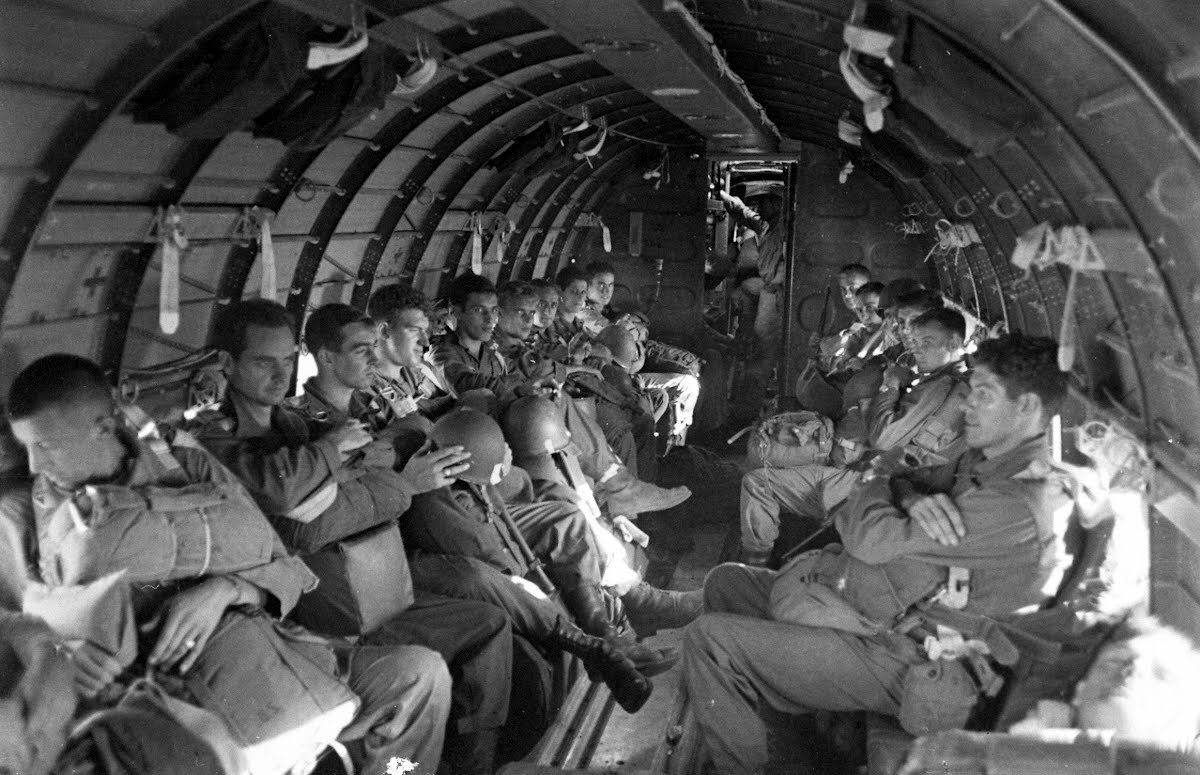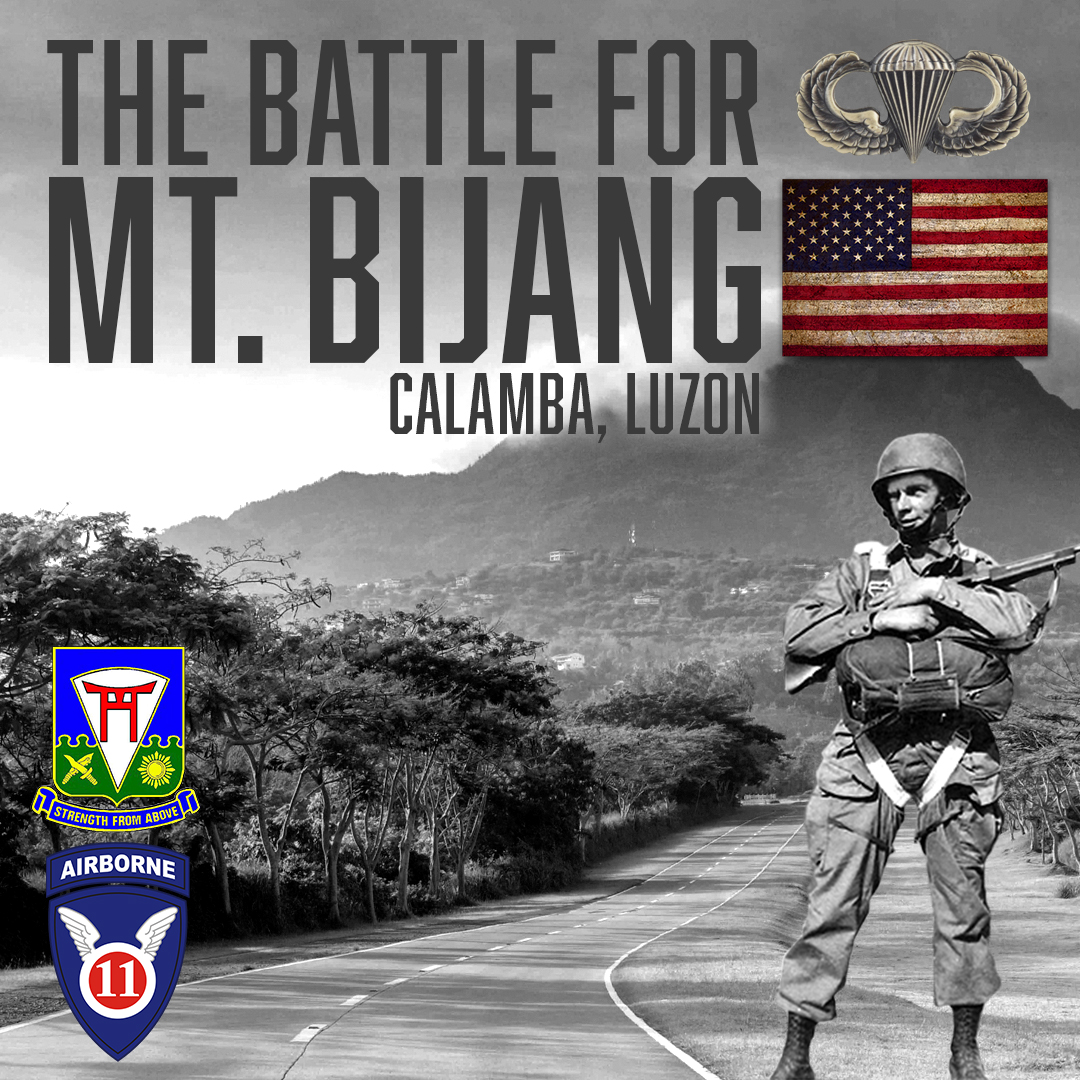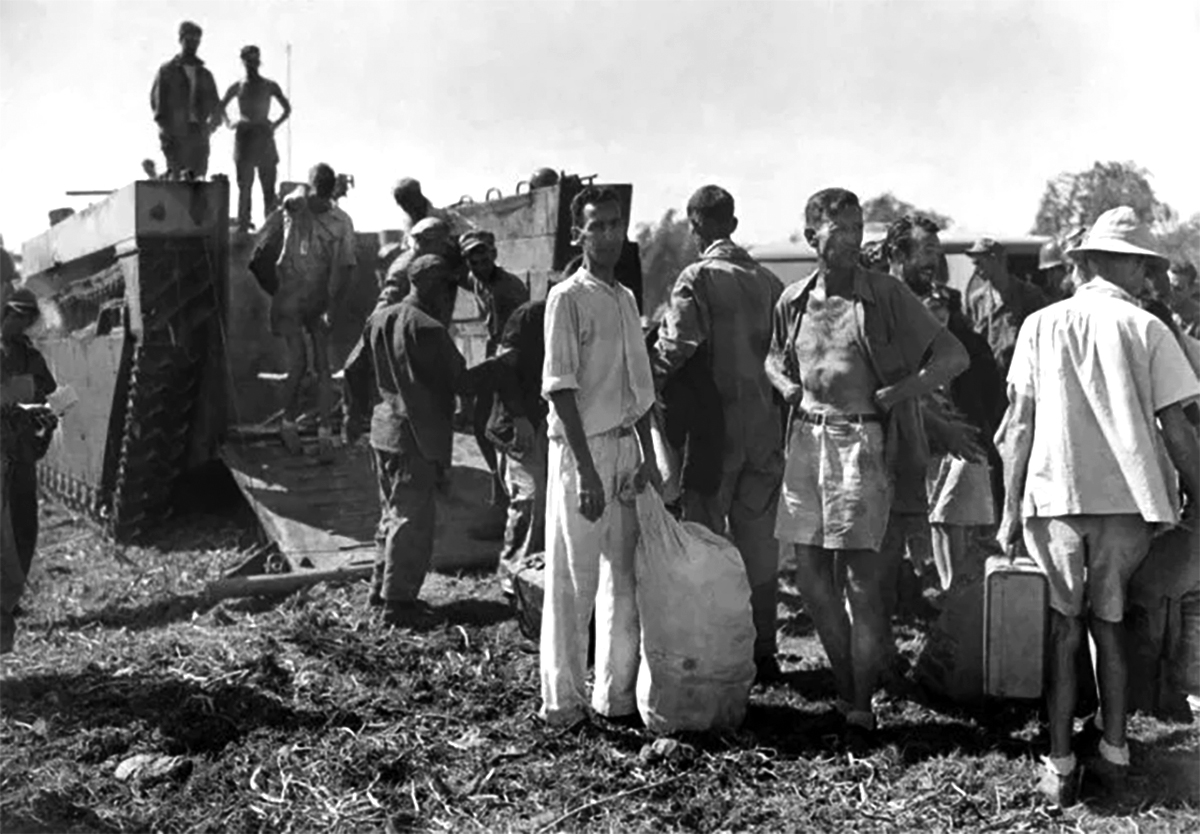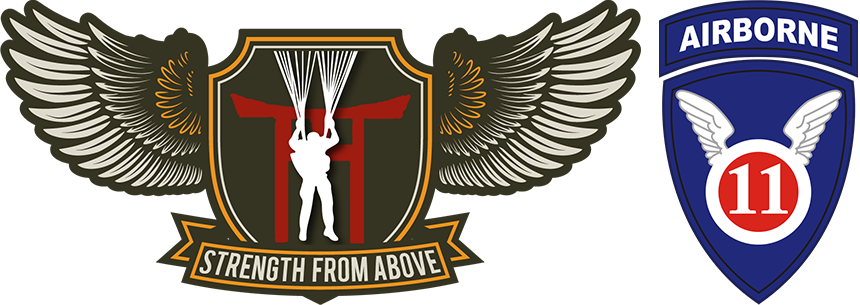
- Details
- By Jeremy C. Holm
- Category: Luzon
- Hits: 2388
"It was hell on earth." -Unnamed 11th Airborne Division trooper
After the 11th Airborne Division’s historic landings on Luzon’s southern beaches at Nasugbu on January 31, 1945, the Angels began a mad dash inland to secure the heights of Tagaytay Ridge just south of Manila. It was a sprint which 8th Army’s LTG Robert L. Eichelberger called, “an exploit that (I consider) one of the most thrilling of the entire Pacific war.”
North of Manila in the Pampanga Plains, General Walter Krueger’s 175,000-man Sixth Army had become “bogged down”, and General Douglas MacArthur placed his hopes for a breakthrough on General Eichelberger’s Eighth Army to the south.
While originally a mere reconnaissance in force, the 11th Airborne, supported by various units, fought through enemy defenses in the Aga Pass then up to the heights of Tagaytay Ridge which the Angels in the 511th Parachute Infantry Regiment dropped onto on February 3, or X+4.
As the Angels spread out to secure road junctions on Highway 17 and patrol nearby towns, Generals Swing and Eichelberger set up their CPs atop the ridge at the Manila Hotel Annex. The two had a decision to make: continue securing the surrounding areas (their written orders) OR continue north into Manila (a verbal proposal given to Eichelberger by MacArthur himself).
There was no question: the Angels would push into the city.

- Details
- By Jeremy C. Holm
- Category: Luzon
- Hits: 3957
After the 511th Parachute Infantry Regiment dropped on Luzon’s Tagaytay Ridge just south of Manila, on February 4, 1945, COL Orin D. Haugen obtained permission from MG Joseph May Swing to lead the division’s push into the city.
“(Colonel Haugen) picked D Company to lead the regiment,” 1st Platoon’s 1LT Andrew Carrico recalled. “And Captain (Stephen) Cavanaugh put my platoon out in front of everybody. The tip of the spear.” Carrico then added with a smile, “My squad leaders all asked, ‘Why do we get all the dirty jobs?!’
CPT Stephen Cavanaugh traveled with 1st Platoon’s Leyte veterans as they were trucked towards Imus with the objective of finding a way across the Imus River. After reaching town’s main bridge, which had been blown, CPT Cavanaugh had 1st Platoon dismount and move west through town looking for a rumored secondary crossing, the last remaining structure across the river that could support the division’s two-and-a-half ton trucks. If it fell, so would the fast pace of the Division’s drive into the city.
Cavanaugh was apprised of an enemy camp in town around 0600 by 1LT Edwin B. Jeffrees of 2/511’s S-2. D Company’s Paratroopers carefully walked along the river until they reached a large walled courtyard containing several stone buildings. CPT Cavanaugh and 1LT Carrico quietly studied the courtyard and observed that it contained an enemy force preparing to depart the stone compound, possibly to cross the nearby dam/bridge before blowing it.
PFC James Wentik, part of the S-2 Jeep patrol which now accompanied D Company, noted, “(The Japanese) were entirely unaware of our presence and clearly did not expect us at that time since there seemed to be no effort toward security... This church yard was quite large and there could have been a couple of hundred Japanese.”
For the Division to successfuly enter Manila, the Japanese garrison would have to be destroyed.

- Details
- By Jeremy C. Holm
- Category: Luzon
- Hits: 16242
For years now I have been reading and listening to articles and podcasts mistakenly claiming that Operation Varsity (part of Operation Plunder) was the last airborne operation of World War II. While Varsity was indeed an enormous campaign that involved over 16,000 paratroopers and thousands of aircraft, it was not THE last airborne operation of the war, though in can correctly be called the last one held on such a massive scale (Varsity was the largest single-day/single-location airborne deployment in history).
So, if that is the case, what WAS the last airborne operation of World War II? Answer: The 11th Airborne Division's Gypsy Task Force.

- Details
- By Jeremy C. Holm
- Category: Luzon
- Hits: 29802
The Battle for Luzon's Mount Bijang (also Bijiang), located about 40 miles south-east of Manila is one of those obscure combat engagements that the world has passed over simply because World War II was full of tens of thousands of such operations on land, the seas and in the air.
As any military historian (or even casual student) can tell you, these battles were often fought by men, frequently young men, who found deep wells of courage in the heat of battle in a mixture of adrenaline, duty, will, and an unrelenting desire to do their best for their buddies.
The Battle for Mt. Bijang is the story of one understrength parachute company in their fight to take and retain what their company commander called, "an insignificant piece of real estate" against an estimated 300 Japanese defenders. I have heard from the paratroopers who were there, including that company commander, and from my own grandfather, 1LT Andrew Carrico III who was serving as Company Executive Officer at the time and was wounded so badly that some in D Company thought he was killed. The Battle for Mt. Bijang was one of those "small-unit operations" that displays the effects of superb leadership, skilled NCOs, determined frontline fighters and one unit's unwillingness to let each other down.

- Details
- By Jeremy C. Holm
- Category: Luzon
- Hits: 11340
Seventy-five years ago on February 23, 1945 the 511th Parachute Infantry Regiment and the 11th Airborne Division ("The Angels") conducted their famous raid on the Los Baños internment camp on Luzon, Philippines. It is, perhaps, the regiment's most well-known operation (although their history is full of incredible campaigns). At Los Baños, the Angels were willing to risk heavy losses to rescue the 2,100+ men, women and children who had been prisoners of the Imperial Japanese forces since early 1942, so roughly three years. After the 11th Airborne landed on Luzon in late January and early February of 1945, Major General Joseph May Swing was tasked with effecting a rescue of the civilians held at the camp. The problem was that in early- and mid-February General Swing's Angels were heavily engaged in the fight for Manila and therefore he could not commit a force of sufficient size to conduct the raid for now. The internees would have to wait a few weeks more.
Despite horrendous conditions in the camp under the Imperial Japanese guards, the internees at Los Baños were in good hands, some would even say miracle-effecting hands. No, I am not referring to the camp's abundance of clergy who, after arriving in July of 1944, labored to keep up the spirits (and faith) of the internees (although some refused to help with the sick in the camp).

- Details
- By Jeremy C. Holm
- Category: Luzon
- Hits: 7321
"This operation will remain in military history as a classic example of the use of airborne troops to achieve tactical surprise." -Lieutenant-General William P. Yarborough, 1989.
Note: This timeline is an attempt to cover the major aspects of this historic operation by date/time. It will not cover every facet or key player of the raid in detail for to do so would require (and has) an entire book. If you would like to read the full story of this mission, you may do so in my book, “When Angels Fall: From Toccoa to Tokyo, the 511th Parachute Infantry Regiment in World War II”
I would like to give a special thank-you to Col. Edward H. Lahti who was CO of the 511th Parachute Infantry Regiment at the time of the raid and whose papers I am in possession of.

- Details
- By Jeremy C. Holm
- Category: Luzon
- Hits: 7304
The Santo Tomas Executive Committee originally posted this message on May 8, 1945 indicating that a new internment camp was being opened on the shores of Laguna de Bay on Luzon. The site was to be the Los Baños Agricultural College.
This afternoon the Commandant of the Camp issued the following statement to the Executive Committee:
I am authorized by the Director-General of the Japanese Military Administration in the Philippines to make a statement regarding the change of location of enemy civilian's internment camp.
As all of you are well aware, released enemy nationals in the city of Manila are more than 2,000. Most of them, being unemployed, are in extreme difficulties in their living, and the number of applicants for internment is daily increasing. It is, however, to be pointed out that the present accommodations available in the Santo Tomas Internment Camp is not sufficient to have all of them interned there, and particularly so from sanitary point of view.

- Details
- By Jeremy C. Holm
- Category: Luzon
- Hits: 13603
Documents list and videos below photo gallery - View Complete Operation Timeline Here
A. Camp Related Documents
1 - Notice of Transfers from Santo Tomas to Los Baños - May 8, 1945
2 - Camp Roster from December 25, 1944
B. Letters:
1 - 5x Letters from Martin L. Squires of Div Recon to LTG Edward M. Flanagan 1984-1986
2 - Letter from Sgt. Martin L. Squires (Div Recon) to Maj. Henry Burgess 1984
3 - Letter from Cpl. Terry Santos to Sgt. Martin L. Squires (both Div Recon) - 1984
*Note: Martin Squires later married an internee he helped rescue, Margaret Whitaker
- Details
- By Jeremy C. Holm
- Category: Luzon
- Hits: 49280
"This operation will remain in military history as a classic example of the use of airborne troops to achieve tactical surprise." -Lieutenant-General William P. Yarborough, 1989.
75 years ago two incredible events occurred thousands of miles across the vast Pacific Ocean. The first took place at around noon six United States Marines raised a second, larger American flag atop Mount Suribachi, a moment that was captured in an iconic photograph by Associated Press (AP) photographer Joe Rosenthal. When AP Photograph Editor John Bodkin received the photo on Guam he exclaimed "Here's one for all time!" It became one of the most recognized images from the war, indeed in American history.
The prominence of Rosenthal's photo in the press overshadowed, then and now, the accomplishment of another group of fighting men who risked it all to to rescue over 2,100 men, women and children from behind enemy lines over 1,500 miles southwest of Iwo Jima. Theirs was the second incredible event that took place on February 23, 1945 and it is as inspiring as it is impressive.
The 11th Airborne Division's raid on the Los Baños Internment Camp.


 "We Were The Best There Ever Was."
"We Were The Best There Ever Was." 


